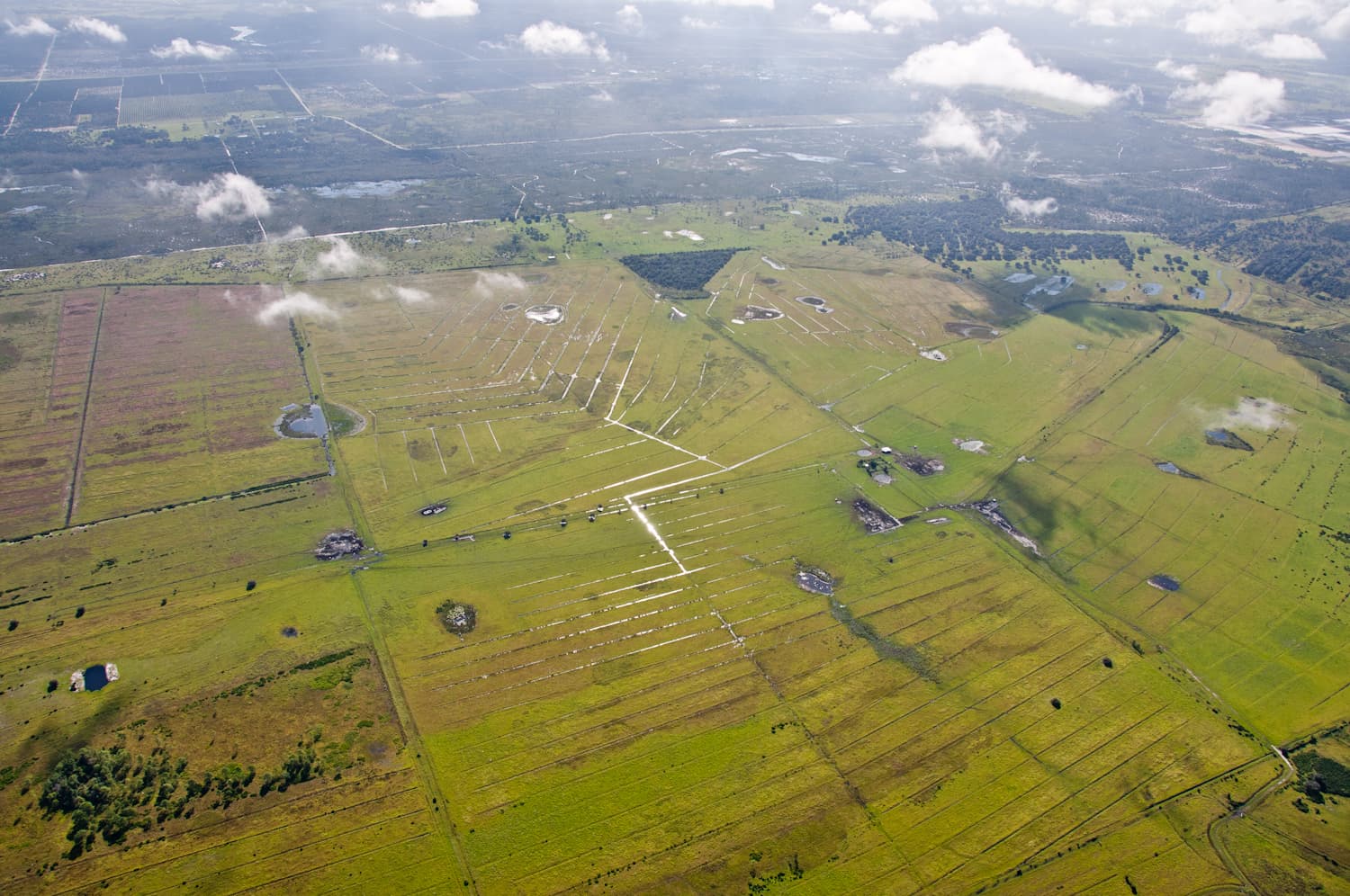.jpg&w=3840&q=75) Photo by: RC Tucker
Photo by: RC TuckerWetland Restoration Outcomes
Evaluating outcomes of hydrological restoration in grazed and ungrazed seasonal wetlands
We assessed restoration outcomes in 15 depressional wetlands on a seepage slope on the southern Lake Wales Ridge. Ten study wetlands were hydrologically restored under USDA’s Wetlands Reserve Program. Cattle were fenced out of five restored wetlands, resulting in three treatments: restored-ungrazed, restored-grazed and unrestored-grazed. Pre- and post-restoration monitoring of plant communities allowed us to assess effects of increased water levels and continued grazing.
Major Findings & Impact
Plugging off ditches effectively increased wetland depths in the restored wetlands. Maidencane, a native grass, increased significantly in ungrazed wetlands. Overall, the vegetation responses to restoration were slow and subtle, with desired changes in plant communities only becoming detectable 5 years following restoration. Our results emphasize the need for long-term monitoring to assess success of costly restoration activities.
Project Details
More about this project
Data and Analysis Types
Water depth, plant species richness, beta diversity, and floristic quality, relative cover of obligate wetland species and facultative upland species
Primary Location(s)
Archbold Biological Station
Years Active
2011-2016
Related People
Related Programs
 Photo by: R. Pickett
Photo by: R. Pickett Photo by: RC Tucker
Photo by: RC Tucker

_square%20cropped.jpg&w=3840&q=75)
.jpg&w=3840&q=75)